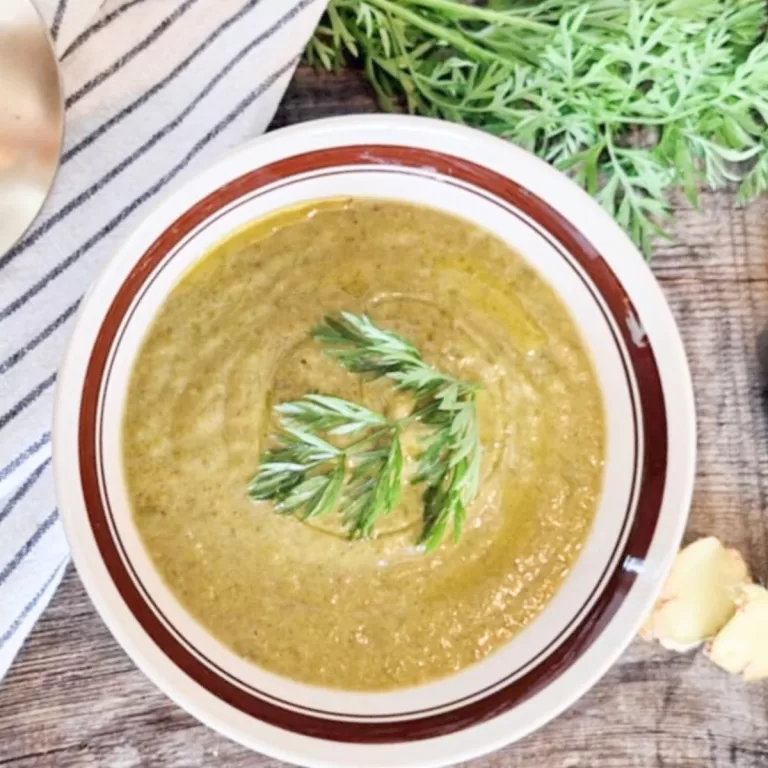Roses are blooming and you can use their petals to make your own DIY rose water and capture their wonderful fragrance for a little longer! Keep reading to discover all the benefits and uses of rose water and a simple DIY recipe.
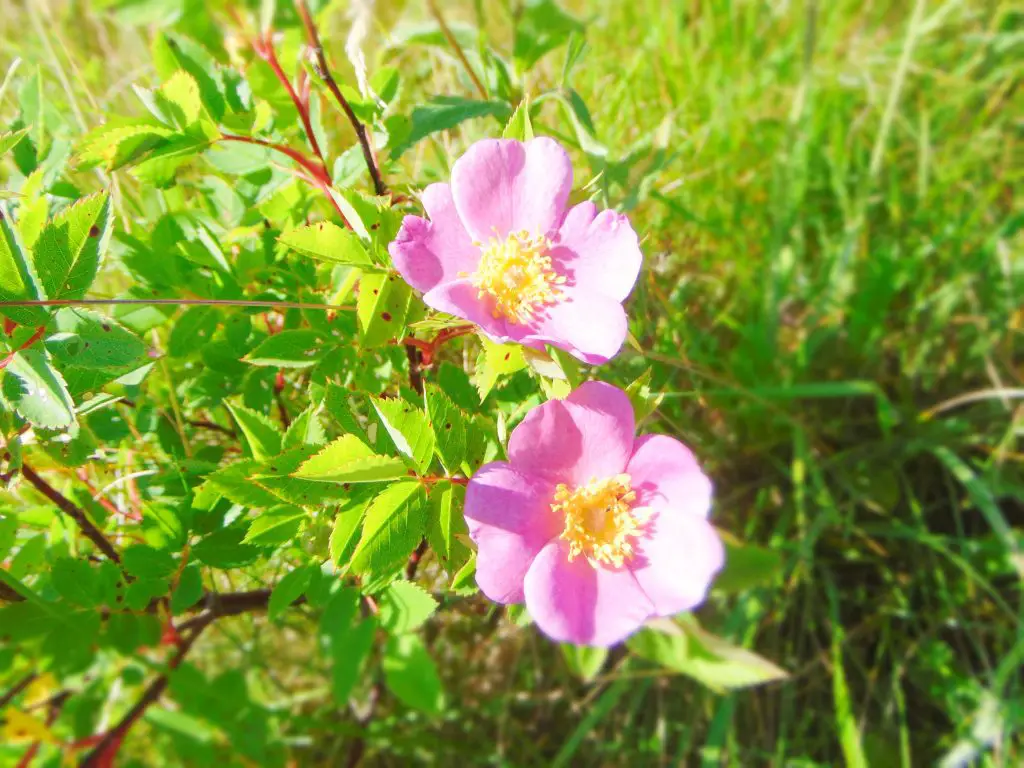
If you, like me, love making your own natural remedies, cleaners, skincare, and more, using simple ingredients from your pantry, your garden, or herbs you forage, welcome here! This is the perfect place for anyone who wants to live more naturally without the overwhelm.
Rose water smells divine and has many benefits. Making rose water at home is also very easy and much more inexpensive than buying rose water at the store!
Among my other favorites, you’ll find tutorials for making nourishing tallow cream, a rich anti-aging face cream, a natural and effective DIY lemon all-purpose cleaner, soothing herbal salves like plantain and yarrow, and even a simple oxymel for cold and flu symptoms. Everything is 100% natural, simple to make, and completely homemade, just the way it should be.
All the benefits and uses of rose water
Rose water for skin care
Because of the anti-inflammatory and hydrating properties of roses, rose water is a wonderful addition to your skincare! Rose water is a wonderful skincare clean swap if you’re trying to use natural products and reduce your exposure to harmful toxins.
Rose water has many beneficial properties for your skin, including:
- Balances pH
- Soothes irritation
- Reduces redness and inflammation
- Hydrates
- Minimizes pores and reduces fine wrinkles
To give your skin all the benefits of rose water, you can use rose water as a toner, applying to your clean skin with a cotton ball, cloth, or spray bottle. You can also add rose water to your favourite moisturizer or face mask to boost their properties, to the bath for a relaxing experience, or even add rose water to your drinks (some celebrities swear by it!).
Rose water is great to soothe skin after shaving or to relieve a mild sunburn. I love keeping a bottle of rose water in the fridge and applying it on my skin after a day at the beach!
Rose water can also be used as a hair rinse, leaving your hair extra soft and with a subtle smell of roses.
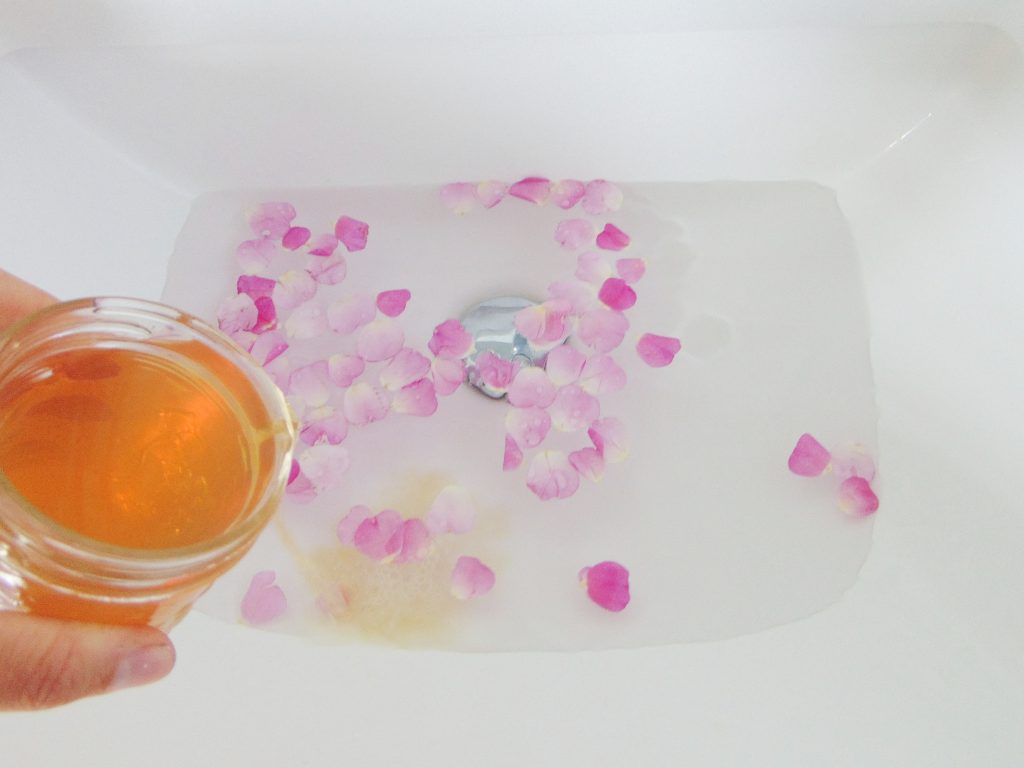
Rose water in the kitchen
When consumed as a tea or added to drinks, rose water also has benefits that include:
- Relieves digestive upset
- Soothes sore throat
- Helps hydrate and soothe skin
Rose water is a common ingredient in many recipes from around the world, especially desserts. The delicate aroma and taste of rose water can bring out a recipe’s sweetness and balance out more tart ingredients, as well as add interesting floral notes to foods.
If using rose water in your recipes, make sure you select organic roses that were not sprayed with any pesticides or other chemicals. Never use store-bought bouquet roses for making rose water, especially if using it for food!
Rose water is a great addition to baking goods. Try these pretty rose shortbread cookies by Milk and Cardamom or this malabi rose water milk pudding from the Spruce eats.
You can even use rose water for savoury recipes, such as this Lamb stew with rose water by Analida’s ethnic spoon.
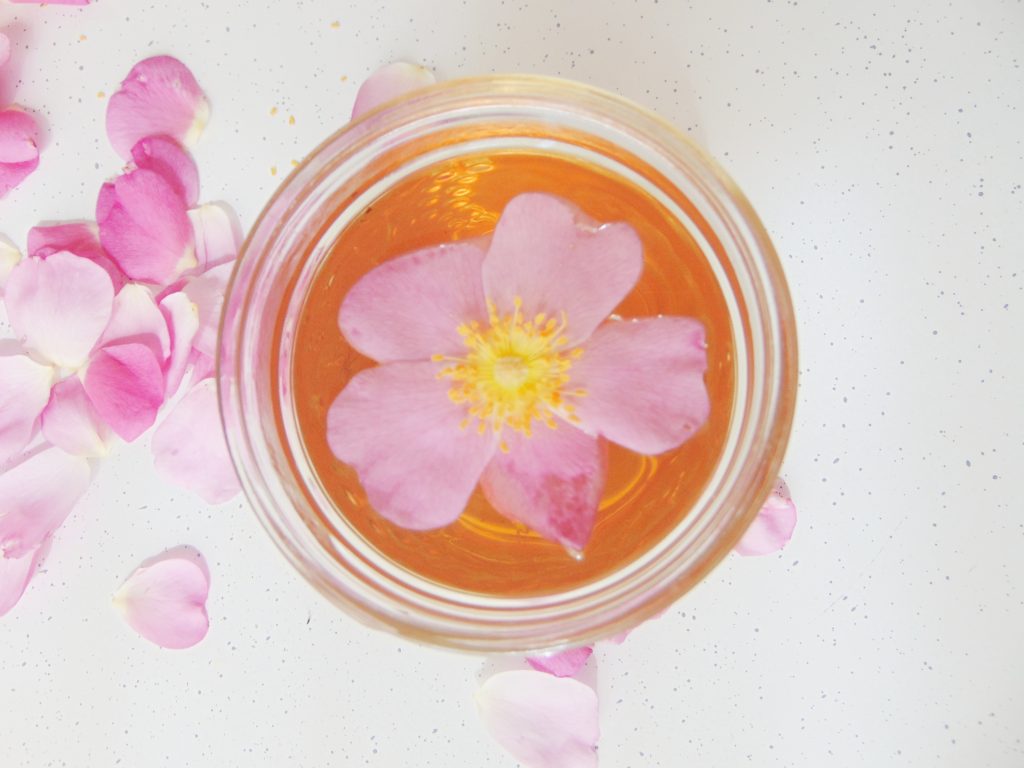
Making rose water by distillation: it’s simpler than it sounds
Making your own rose water is a wonderful way to use the roses from your garden or the wild ones around, and enjoy their heavenly smell again and again.
The most effective way to make rose water is by distillation. This process may sound fancy and complicated but is in reality quite simple. All you need is a pot with a lid, a cup, and some ice!
Compared to simmering or infusing the rose petals in water, distillation preserves a more intense and purer rose aroma, and it’s usually clearer in colour.
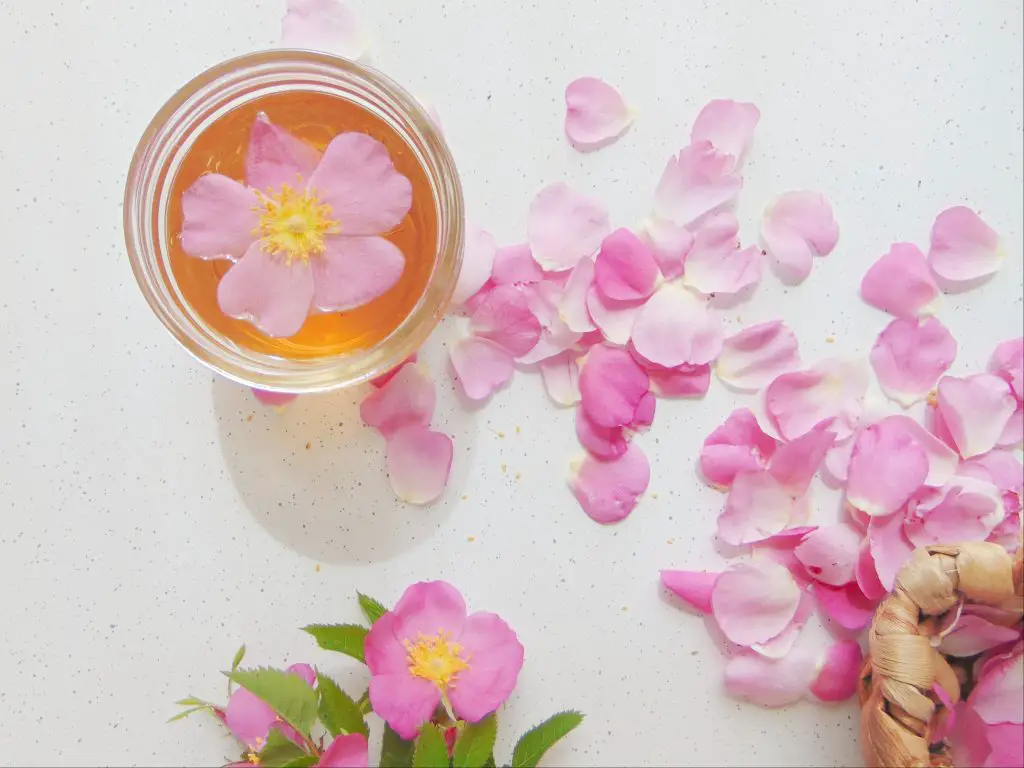
How to harvest rose petals for making rose water
It’s best to harvest freshly opened flowers on a dry morning after the dew has evaporated from the petals, but before the sun gets hot. This will give you the most fragrant petals.
When harvesting roses (especially wold roses), don’t pick the entire flowers, just collect the petals. To do so, gently pull the petals off the stem, removing only the ones that easily come off.
If the petals are dusty or dirty, you can gently rinse them off with cold water before using them.
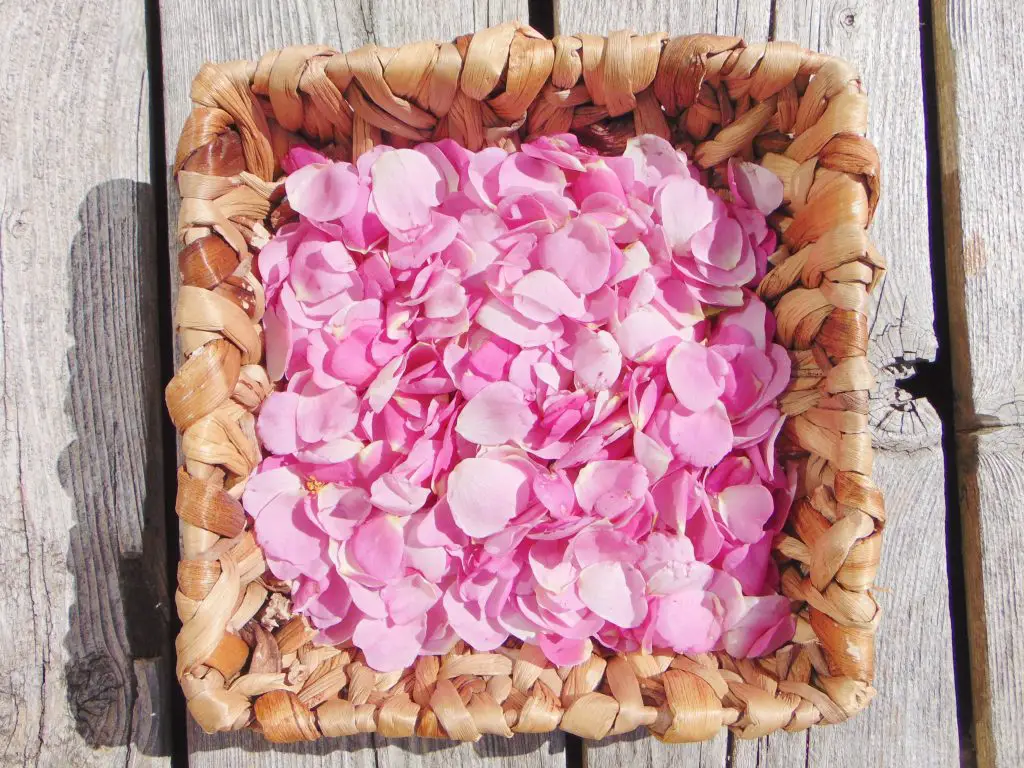
Ingredients and what you’ll need for this DIY rose water recipe
- 3 cups of rose petals
- 3 cups of water, better if distilled (more or less)
- Ice cubes
Equipment:
- One large pot with a lid
- One ceramic bowl
- Storage bottles (glass)
How to make this DIY rose water
- Place a ceramic bowl in the centre of a large pot
- Place rose petals in the pot spreading them out around the bowl
- Add water just enough to cover the petals, making sure the water level is still below the bowl
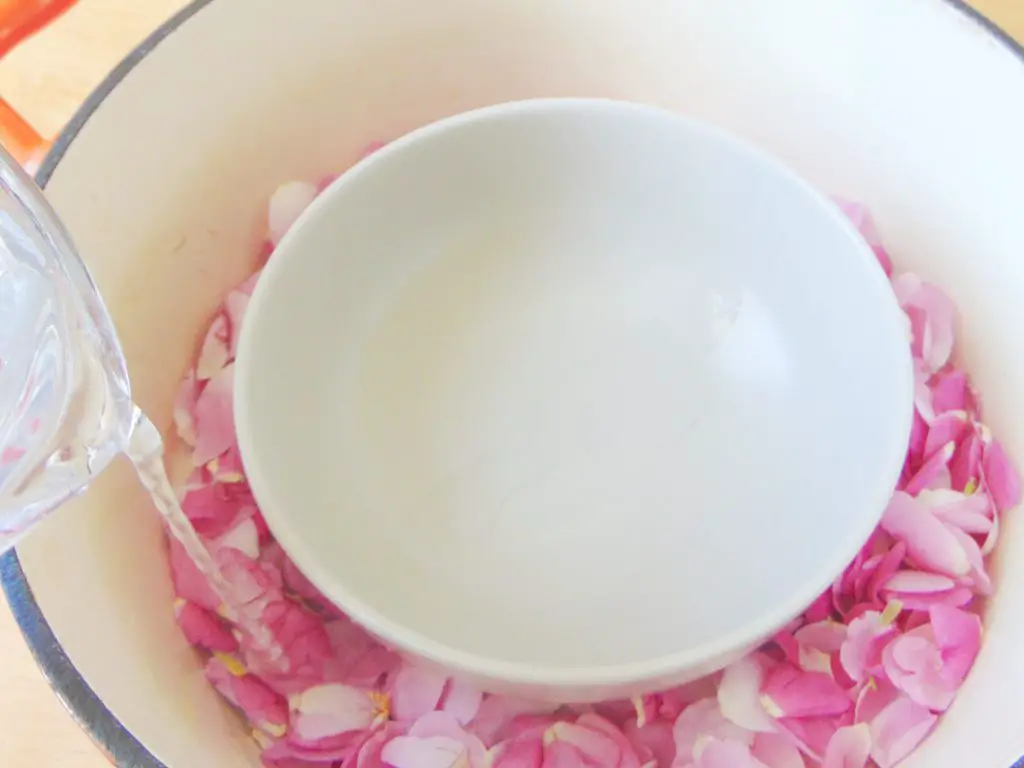
- Place the lid on the pot upside down and place some ice on top of the lid (this will help create condensation)
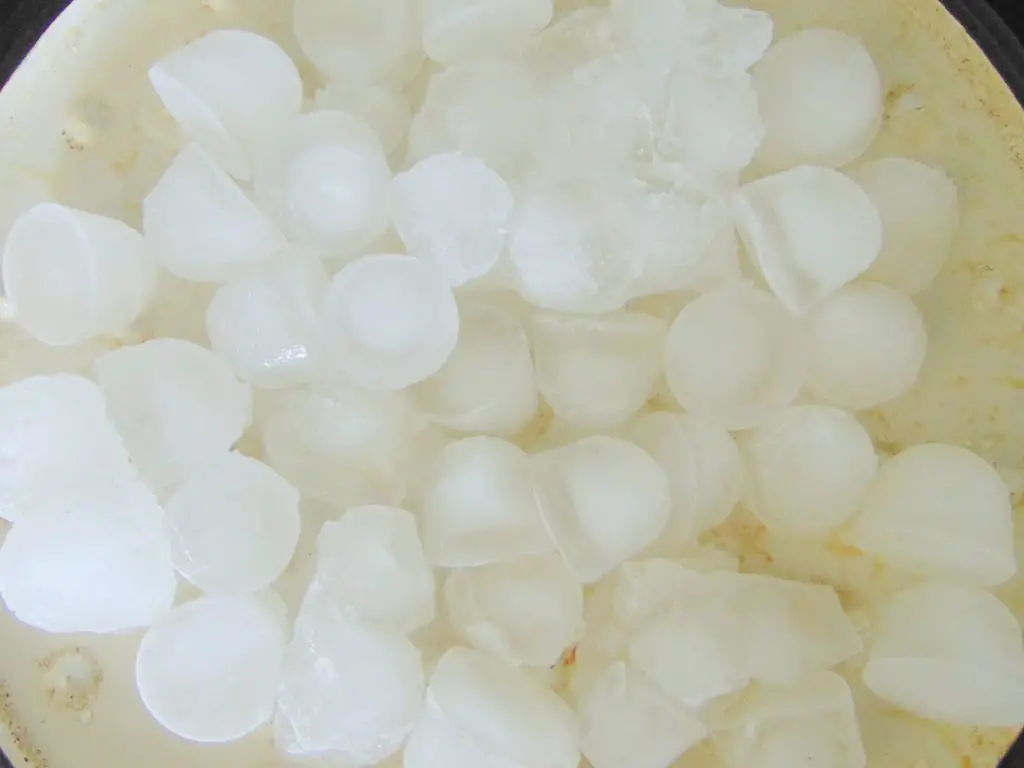
- Let the pot simmer on medium-low heat for about 20-25 minutes. As the ice melts, remove the water and add more ice on top of the lid. The rose water is ready when the petal colour is faded
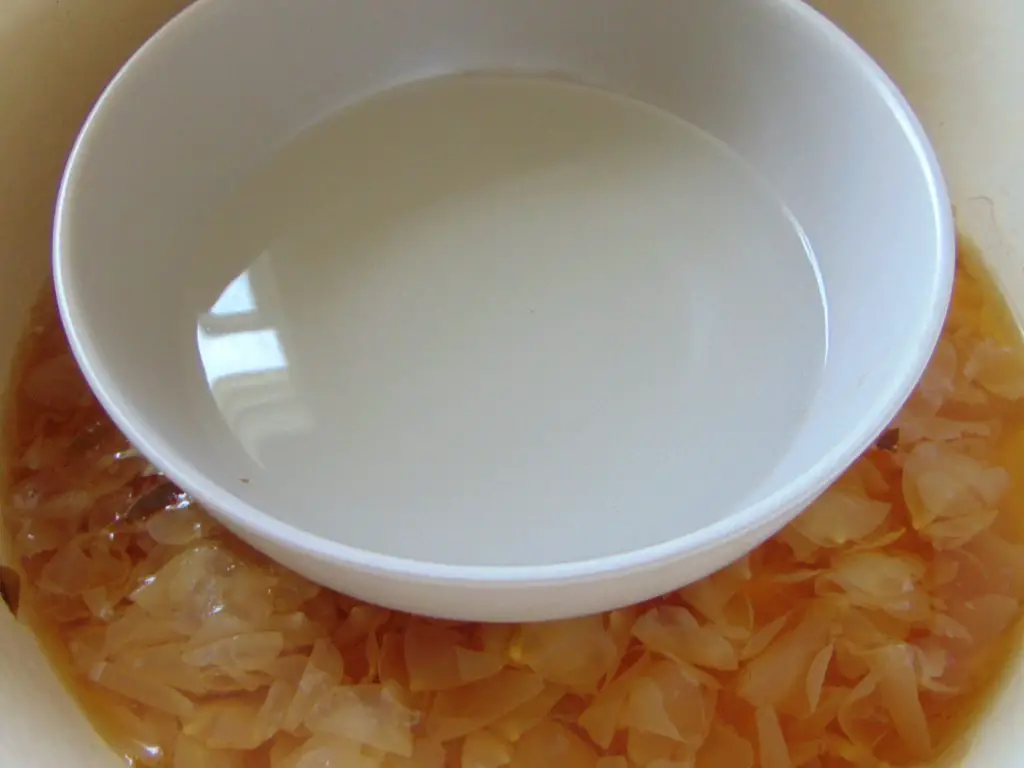
- Pour the distilled rose water that is collected in the bowl into a sealed glass jar or container and store in the fridge for up to 6 months.

Notes
Each variety of rose is different in scent and in colour, so the final result may vary hugely in fragrance and colour.
After the distillation process is over, you can also use the remaining rose water in the pot (made by simmering). Strain the petals from the water with a strainer.
Related posts and More Natural Recipes
What is Simple Living? (And 10 Tips to Simplify your Life)
How to Start a Vegetable Garden on a Budget
How to Make Bone Meal Fertilizer with Bones
DIY Lemon and Vinegar Cleaner: Easy, Effective, All-Natural
Tallow Face Cream: Easy Recipe, Amazing Moisturizer
Natural Anti-Aging Cream Recipe for Youthful, Radiant Skin
Plantain Salve: Easy Recipe for Cuts, Bug Bites and More
Yarrow Salve: Easy DIY Recipe for Soothing and Healing Skin
Easy Oxymel Recipe for Colds and Flu
Pin it for later

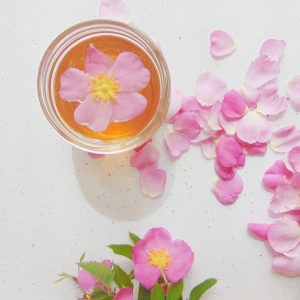
DIY Rose Water Recipe
Equipment
- 1 large pot with lid
- 1 ceramic bowl
Ingredients
- 3 cups of rose petals
- 3 cups of water (more or less) better if distilled
- Ice cubes
Instructions
- Place a ceramic bowl in the centre of a large pot
- Place rose petals in the pot spreading them out around the bowl
- Add water just enough to cover the petals, making sure the water level is still below the bowl
- Place the lid on the pot upside down and place some ice on top of the lid (this will help create condensation)
- Let the pot simmer on medium-low heat for about 20-25 minutes. As the ice melts, remove the water and add more ice on top of the lid. The rose water is ready when the petal colour is faded
- Pour the distilled rose water that is collected in the bowl into a sealed glass jar or container and store in the fridge for up to 6 months.
Notes
After the distillation process is over, you can also use the remaining rose water in the pot (made by simmering). Strain the petals from the water with a strainer.

